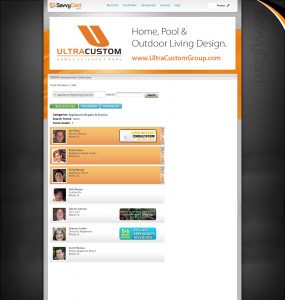Cards Are the Future of the Web – And SavvyCards Are the Present of Cards.
Paul Adams of Intercom posted recently about the rising prevalence of the ‘card’ as a design metaphor as the internet develops to accommodate mobile paradigms. He points out that Twitter has adapted its interface to allow cards to display with summaries of links, while sites like Pinterest use a card format that both works great on mobile and reflows neatly in desktop browsers. The more general underlying trend Adams identifies is that things like APIs are turning the web from a series of pages linked together, into a space where many pieces of information are aggregated together for an individual user – usually, using some sort of card-like metaphor.
We’re glad to have some validation from a former Facebook and Google bigwig, but here at SavvyCard we’ve been into cards for nearly three years. We started designing SavvyCard from the ground up as a framework for sharing information on mobile phones, and the card metaphor seemed obvious. We even coined the term ‘webcard’ to describe the kind of mobile-optimized object SavvyCard lets you build.
SavvyCard shows several of the specific features that arise from using cards as a metaphor for organizing digital information. Adams points out that cards are a great format for telling stories, and SavvyCard gives you a tidy, bite-sized holder for your own story. It’s a story first told in pictures, through your portrait and design, and extending down through deeper and deeper layers of information through SavvyCard’s various functional buttons.
buttons.
When you log in to your SavvyCard account, you also get access to SavvyDecks, a directory that collects the SavvyCards you’ve received in one place. SavvyDecks organizes your collection of cards using minicards that display tiny bites of information, just like a Twitter feed or Pinterest page. And like both of those experiences, SavvyDecks are curated by you as the user. The difference is that SavvyCard is focused on person-to-person networking, so what you’re looking at is a collection of your contacts, or of informative cards (such as cards showcasing real estate properties) passed along by people you know and trust. This means a SavvyDeck will be a lot less active than a Twitter feed – but you’ll care a lot more about each part of it.
So, we’re glad to be part of the next wave of web design innovation. But For SavvyCard and its users, cards aren’t what Adams calls ‘the future of the web’ – they’re the present.
